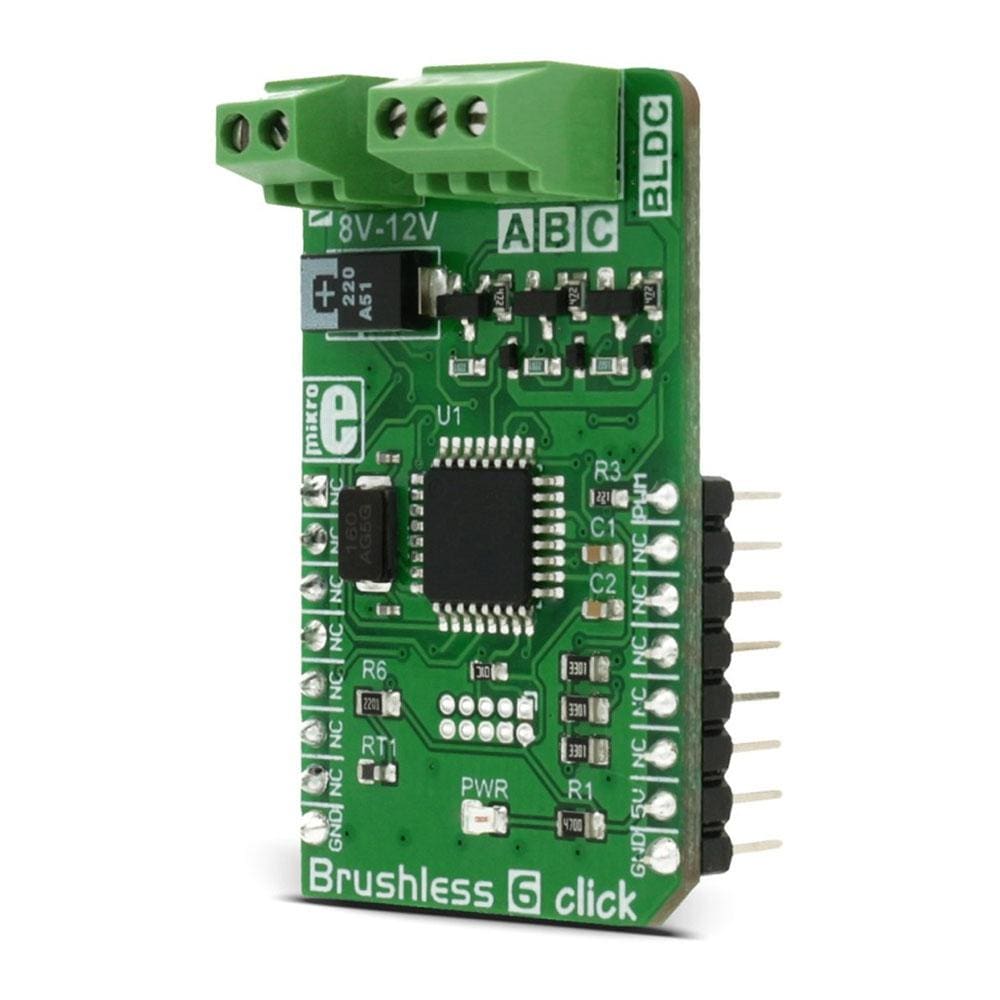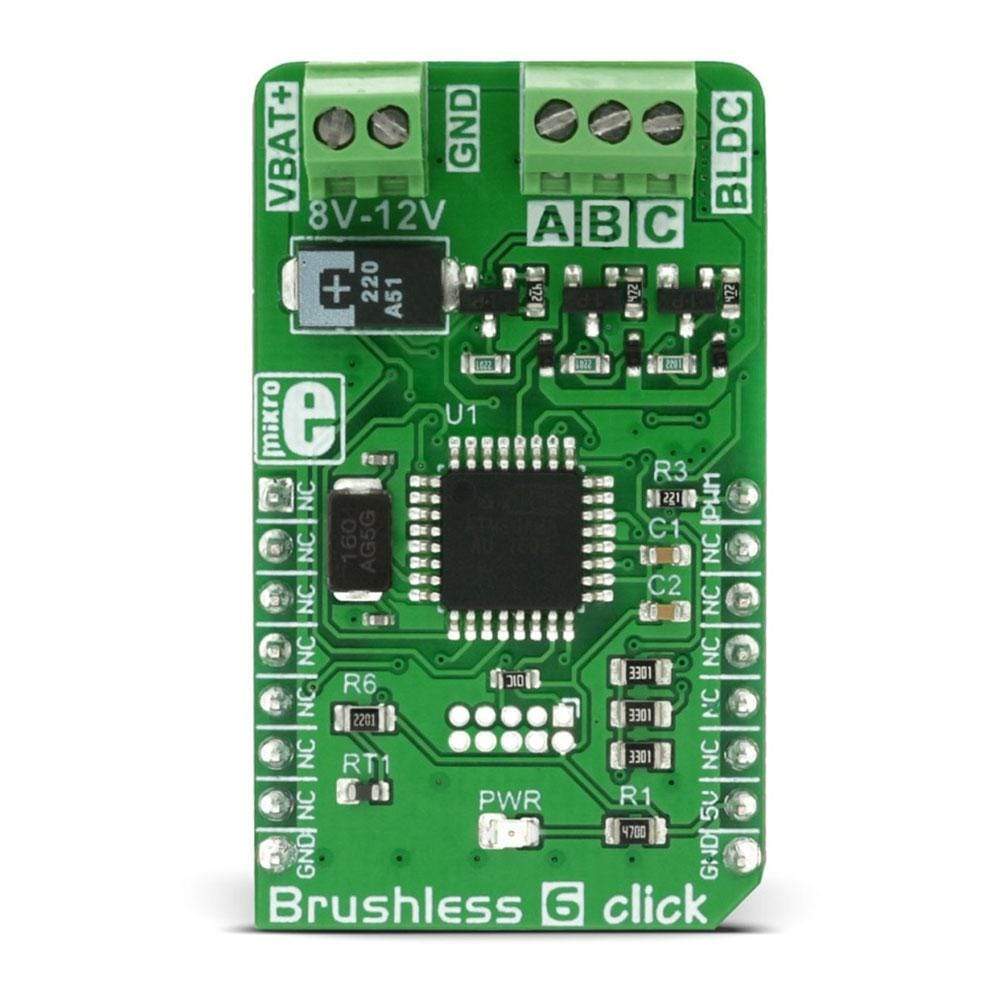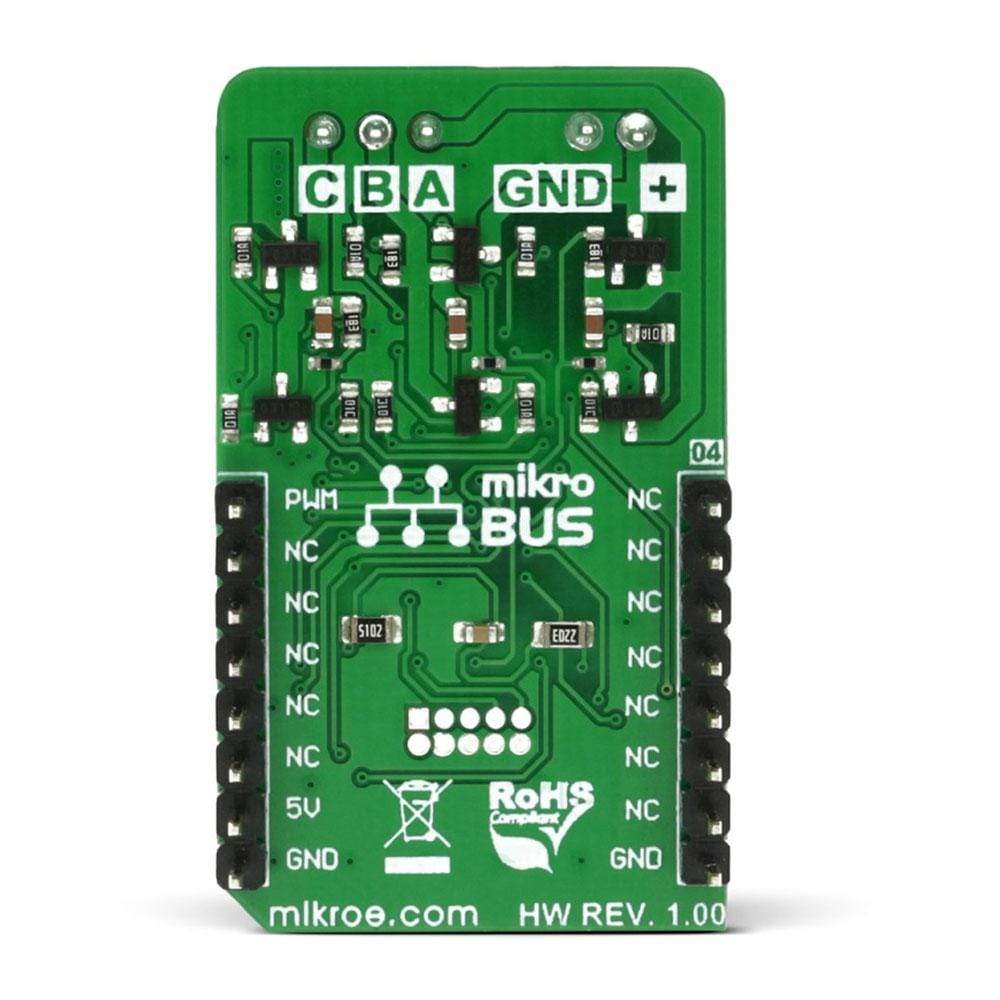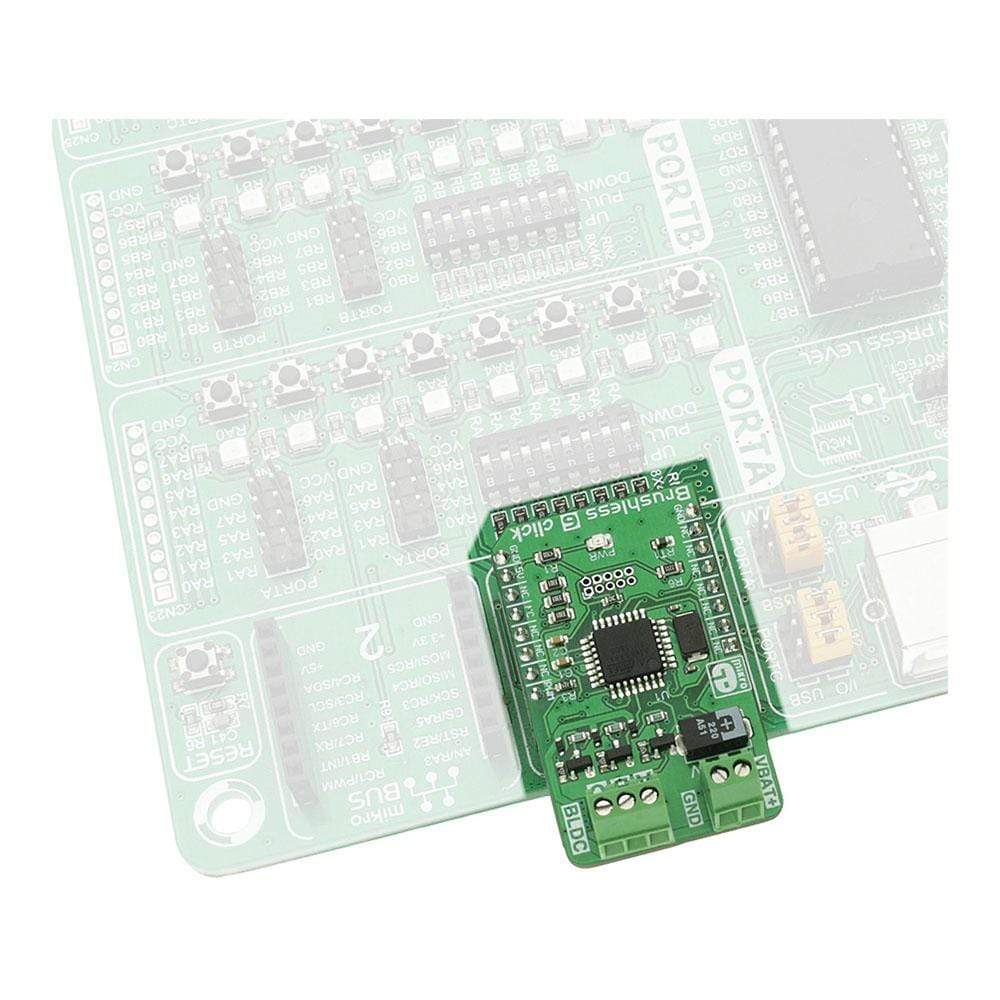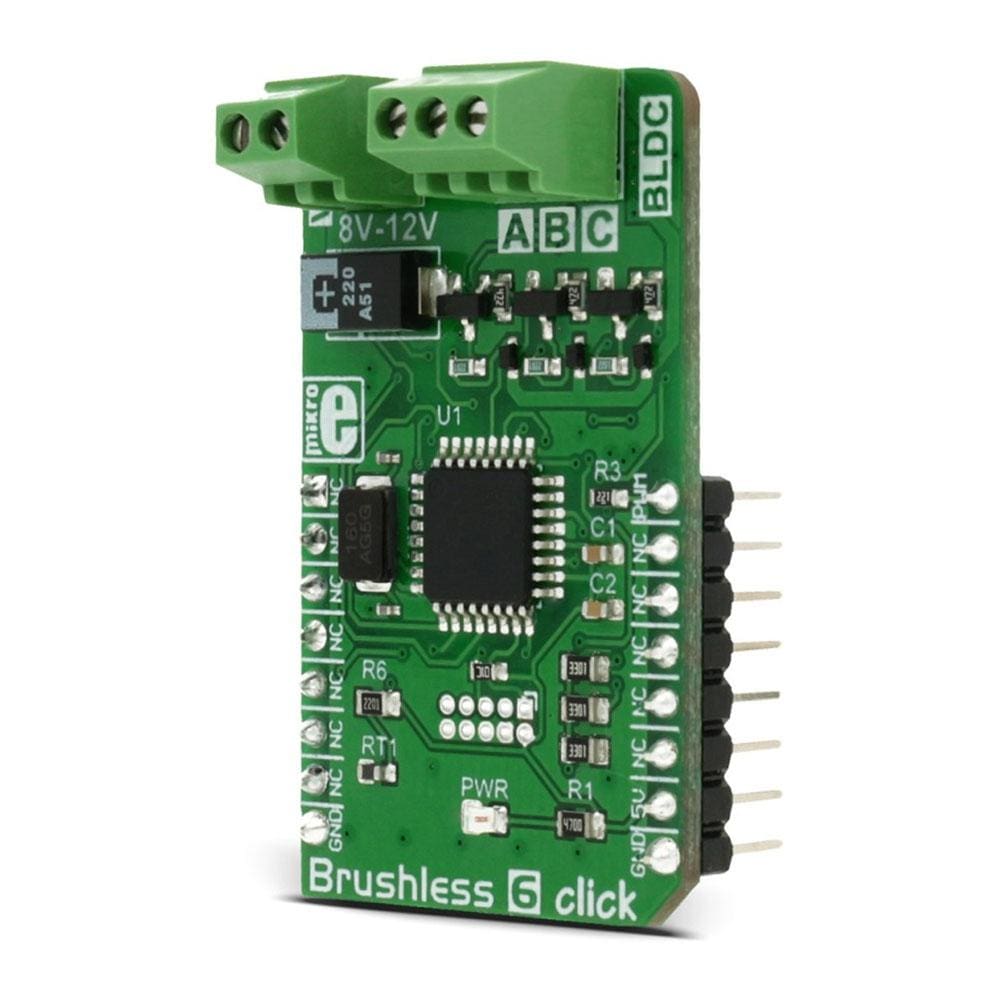

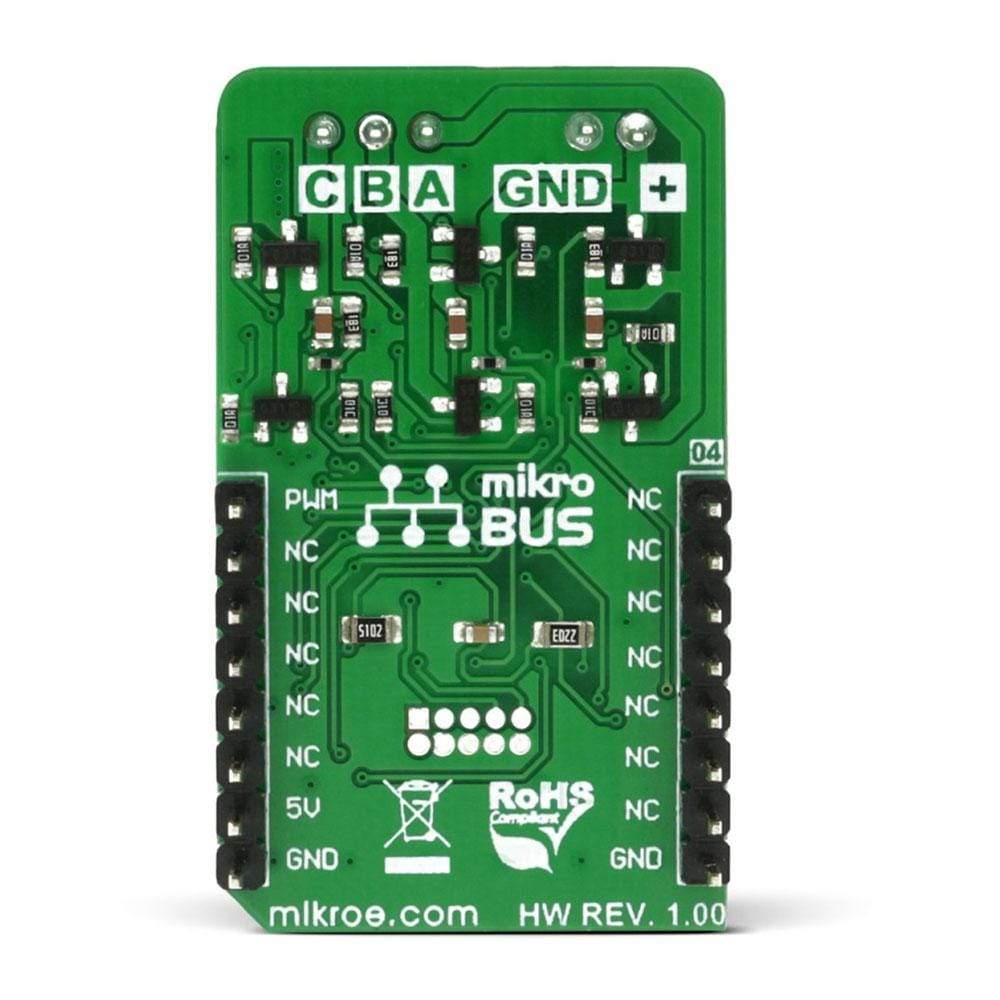
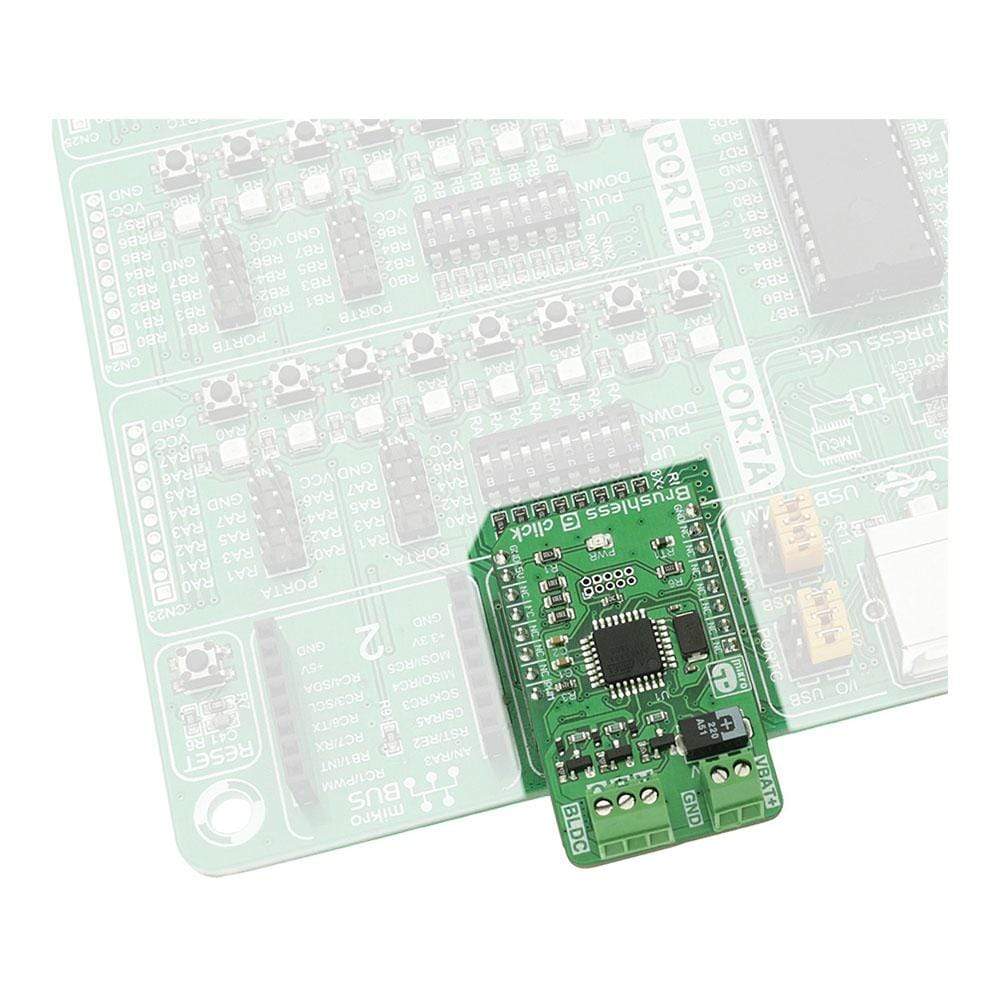
Overview
The Brushless 6 Click Board™ is designed to drive a three-phase sensorless, brushless motor, also known as the BLDC motor. The motor rotation is controlled by receiving driving commands via the incoming PWM signal. This Click Board™ fully controls the rotation of the BLDC motor by utilizing the on-board MCU ATmega8A, an 8-bit MCU from Microchip. The on-board MCU outputs are not adequate to power on the coils of the BLDC motor directly, so this MCU is used to control the power circuitry, instead. This circuit consists of 6 MOSFET transistors, used to switch the power from an external power source to the appropriate stator coils.
Downloads
Das Brushless 6 Click Board™ ist für den Antrieb eines dreiphasigen sensorlosen, bürstenlosen Motors, auch als BLDC-Motor bekannt, ausgelegt. Die Motordrehung wird durch den Empfang von Antriebsbefehlen über das eingehende PWM-Signal gesteuert. Dieses Click Board™ steuert die Drehung des BLDC-Motors vollständig mithilfe der integrierten MCU ATmega8A, einer 8-Bit-MCU von Microchip. Die integrierten MCU-Ausgänge reichen nicht aus, um die Spulen des BLDC-Motors direkt mit Strom zu versorgen, daher wird diese MCU stattdessen zur Steuerung der Stromkreise verwendet. Dieser Schaltkreis besteht aus 6 MOSFET-Transistoren, die zum Umschalten der Leistung von einer externen Stromquelle auf die entsprechenden Statorspulen verwendet werden.
| General Information | |
|---|---|
Part Number (SKU) |
MIKROE-2847
|
Manufacturer |
|
| Physical and Mechanical | |
Weight |
0.02 kg
|
| Other | |
Country of Origin |
|
HS Code Customs Tariff code
|
|
EAN |
8606018712090
|
Warranty |
|
Frequently Asked Questions
Have a Question?
Be the first to ask a question about this.

